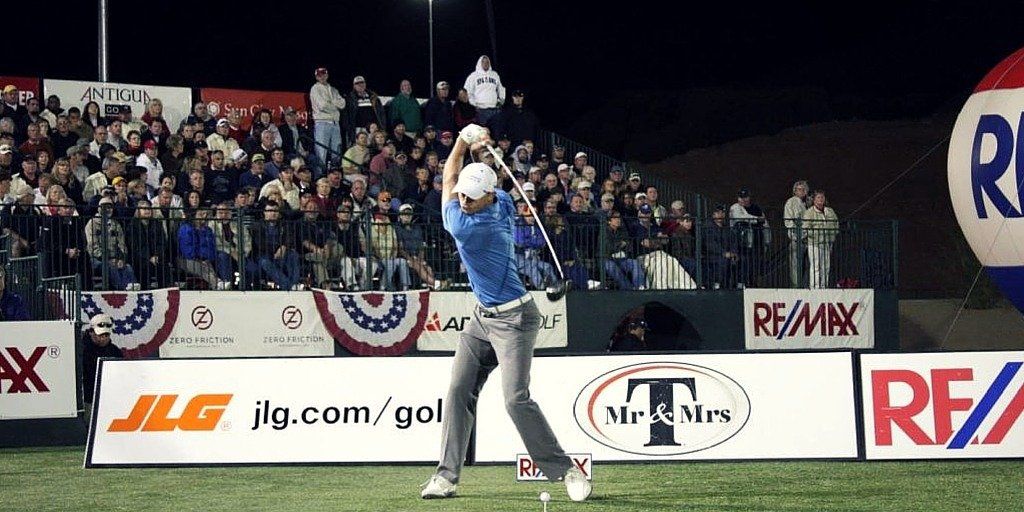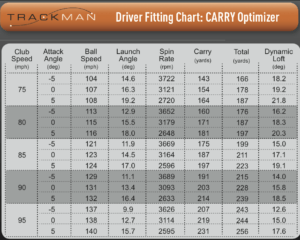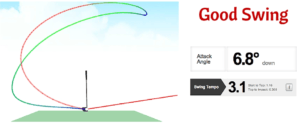
Every golfer wants to know how to hit a driver farther, and we're going to explore some actionable methods you can use in this article.
About seven or eight years ago I was playing a round down in Florida with a few top-notch golfers. We were engaged in a friendly team match for a few bucks, and one of the guys in our group was a former standout player for Florida State University.
He was 15 years removed from his playing days, but he was still the kind of golfer who could fall out of bed and break par with little to no effort.
You know, the type of player we all hate because they make the game look ridiculously easy.
The one thing I noticed about this guy was that he was able to hit towering drives with laser accuracy; I don’t think he missed one fairway all day. Despite being only around 5 foot 8, he consistently launched the ball around 275-300+ yards.
What’s your secret?
That day I was the weak link amongst the group, mainly because I couldn’t keep my driver in play. Early in the round I had misses to the left and right, so I was pretty much clueless on how to get the ball in the fairway.
Towards the end of the day I pulled him aside like a typical golfer looking for advice, and asked him what his secret was with the driver, and what the heck was going wrong with mine.
He simply said, “you need to hit up on the ball, and your setup is all wrong.”
I hadn’t realized it but over time I had let my tee position with my driver shift more towards the middle of the stance, and was teeing the ball way too low (these were the other suggestions he made to me).
Hitting up on the ball
Let’s get to the crux of what this guy was talking about, and how you can add significant distance to your drives (and the 20 yards I promised in the title).
The concept this player was talking about is angle of attack. If you haven’t heard of that phrase, it has become a sexy term in the instruction world with the advent of radar technology like Trackman and Foresight (which can measure it). There are plenty of other articles out there talking about this concept, and many consider it to be the Holy Grail of hitting your drives as far as possible.
Angle of attack is defined as the vertical direction of the club head’s geometric movement at maximum compression of the golf ball.
You can see in this picture that it’s essentially how steep or shallow your club is approaching the ball at impact.

With almost every club in the bag you will have a negative angle of attack. I won’t get into what you should be doing with your irons because that’s a much more complicated topic, so we will talk about the driver in this article.
The driver is the only club in the bag that you make a full swing with that you actually should strive for a more neutral, or positive angle of attack. That’s exactly what the guy was telling me about that day when he said to “hit up on the ball.” Many great drivers of the ball have understood this concept for a long time through trial and error, and recently the data from launch monitors have backed up just how important this is for maximizing your distance.
Take a look at this graph from Trackman. It’s shocking how much distance a player could potentially gain by moving from a negative to positive angle of attack with their driver.

You can see a player with a 95mph swing could go from hitting drives that carry 207 yards all the way up to 231 yards by significantly increasing their angle of attack. That's a tremendous amount of distance to gain without increasing swing speed.
Now there is some debate in the golf world whether increasing angle of attack dramatically will make you a better driver. Some say it might make you lose accuracy.
It’s golf and there is no one right answer to anything, so I’ll just leave it at that.
The fact remains that almost every player wants to learn how to hit a driver farther, and this is a legitimate way to do it without having to swing harder, or buy a fancy new driver.
How to hit a driver farther?
OK so here’s the problem. I’ve told you that you need to hit up on the ball more in order to launch your drives much farther. How do you do it, and then how do you confirm whether or not you are actually making progress?
The conventional wisdom out there is to:
- Tee the ball higher
- Move the ball closer to your lead foot (just inside the heel)
- Lower your trail shoulder so your spine angle is pointing to the sky a little more
Some of these changes may or may not work for your particular swing. There are plenty of other suggestions, but if I mention them I’ll just confuse you more (and that’s not the point of this website).
I always like to have some kind of feedback whenever I’m making swing changes. The issue with angle of attack is that the systems that track it cost anywhere between $5,000 to $25,000.
Luckily there are other solutions like swing analyzers that are more reasonable for regular golfers like you and me. One of the few that track angle of attack is Swingbyte.
So if you do actually want to try and crank your drives further, and don’t want to do it by swinging out of your pants, you could experiment with trying to swing up on the ball more.
A Drill and feedback
Most recreational golfers are hitting down on the ball with their drivers for a number of reasons, and because of that they are not optimizing their distance potential for their swing speed.
I’ve seen a number of drills out there to increase angle of attack, and I think this one from Andrew Rice is one of the best. It’s simple, and all it requires is an empty sleeve of balls.
Now if you want to actually measure if you are making any progress then I would recommend giving Swingbyte a shot. I’ve been using it in my practice sessions to track my tempo, and I have done some work with monitoring my angle of attack with the driver.
I wouldn’t obsess about the actual number you are getting, but rather track the difference in numbers between your swings. Devices like Swingbyte that track the motion and position of your club throughout the swing use a different technology than launch monitors. Comparing numbers for certain data points like attack angle can be like comparing apples to oranges.
When I practice I like to establish a baseline number, and work from there. I generally am tracking my tempo, and want it to be as close to 3.0 as possible (read this article to find out why). Here are a couple of swings I've taken with my driver.

This first swing was not so good. My tempo was off a bit, and I was way too steep with the driver. Consequently, the ball flight wasn't so great either. So I use this 10.6 degrees as a baseline reference (keep in mind that number might be a -4 to -3 on a launch monitor like Trackman).

Now here's a swing that I saved that had a great ball flight. My tempo was much closer to 3.0, and more importantly I shallowed out my angle of attack considerably.
Eventually you can hone in on a number that works for you. All golf swings are different, and no one can say “X angle of attack is the right one.” However, there is no question that if you are a golfer who has mostly been hitting down on the ball with your driver, you can pick up some serious yardage by fixing this.
Data is data, but the real feedback you should be tracking is where the ball is going. If you notice that the ball is launching higher, straighter, and farther on the swings where your angle of the attack has increased…well then that’s a good thing.
And yes, it you can add as much as 20 yards in some cases, possibly even more. Results may vary though!
Bonus Content - if you want to learn how to maximize your driver distance please check out my complete guide here.
We care about the protection of your data Read our Privacy Policy